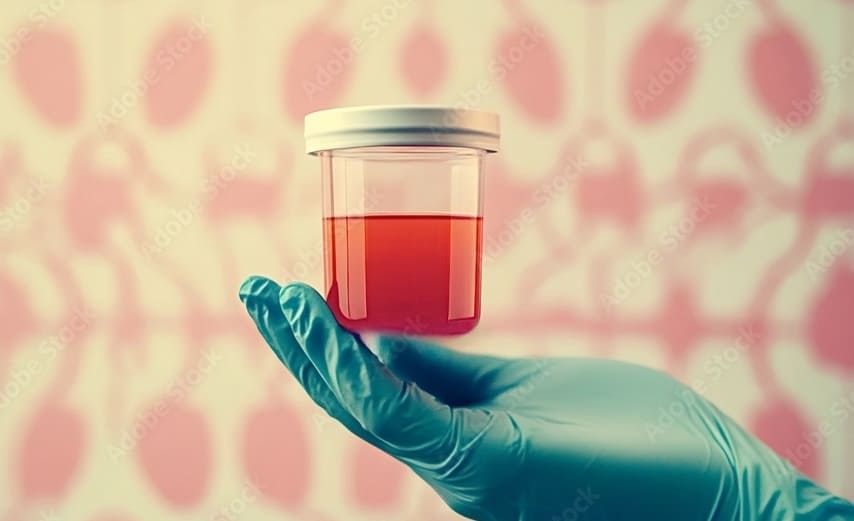Urine color can be a useful indicator of your health. While it’s normal for urine to range from pale yellow to deep amber, seeing a light red or pinkish hue can be alarming. But what does it actually mean? Let’s break it down.
Possible Causes of Light Red Urine
1) Blood in the Urine (Hematuria):
- One of the most common reasons for light red urine is the presence of blood. This could be due to a variety of reasons, including urinary tract infections (UTIs), kidney stones, bladder infections, or more serious conditions like kidney disease or cancer.
- Hematuria can be microscopic (only detected under a microscope) or visible to the naked eye. While some cases are harmless, persistent or heavy bleeding should not be ignored.
2) Certain Foods and Beverages:
- Eating foods like beets, rhubarb, or blackberries can cause urine to appear reddish. This is harmless and usually resolves within a day or two.
- Some food dyes in processed foods can also alter urine color.
3) Medications:
- Some medications, such as rifampin (an antibiotic) or phenazopyridine (used to treat urinary pain), can give urine a reddish or orange tint.
- Blood thinners, like aspirin and warfarin, may also contribute to blood in urine if they lead to internal bleeding.
4) Urinary Tract and Kidney Conditions:
- Kidney infections or inflammation can cause blood to appear in the urine.
- Bladder infections or cystitis (inflammation of the bladder) can also lead to reddish urine, often accompanied by pain and frequent urination.
- Glomerulonephritis, a kidney disorder affecting the filtering units, may cause red urine along with high blood pressure and swelling.
5) Excessive Exercise:
- Intense physical activity, particularly in endurance sports, can sometimes lead to hematuria due to muscle breakdown or bladder irritation.
- This condition, known as “exercise-induced hematuria,” is typically temporary and resolves with rest and hydration.
6) Menstrual Contamination:
- In women, urine may appear red if menstrual blood contaminates the sample. Ensuring proper hygiene and retesting urine after menstruation can help confirm the cause.
When to See a Doctor?
- If the color persists for more than a day or two without an obvious cause (such as food intake).
- If you experience pain, burning sensations, or difficulty urinating.
- If you notice clots or a significant amount of blood in your urine.
- If you have other symptoms like fever, back pain, or unexplained weight loss.
- If you have a history of kidney disease, high blood pressure, or bladder issues.
What You Can Do?
- Stay Hydrated: Dehydration can concentrate urine, making any discoloration more noticeable.
- Track Your Diet: If you’ve eaten red-colored foods, wait a day or two to see if the color fades.
- Monitor Symptoms: If you experience other unusual symptoms like nausea, fever, or swelling, seek medical attention promptly.
- Seek Medical Advice: If symptoms persist, a doctor may recommend a urine test, blood work, or imaging tests to determine the cause.
- Avoid Self-Diagnosis: While occasional red urine may not be serious, repeated occurrences warrant a medical evaluation to rule out underlying conditions.
Final Thoughts
Light red urine can be harmless, but it can also be a warning sign of an underlying condition. Paying attention to other symptoms and seeking medical advice when needed can help ensure your health and well-being. If in doubt, it’s always best to check with a healthcare professional!
Also Read:
